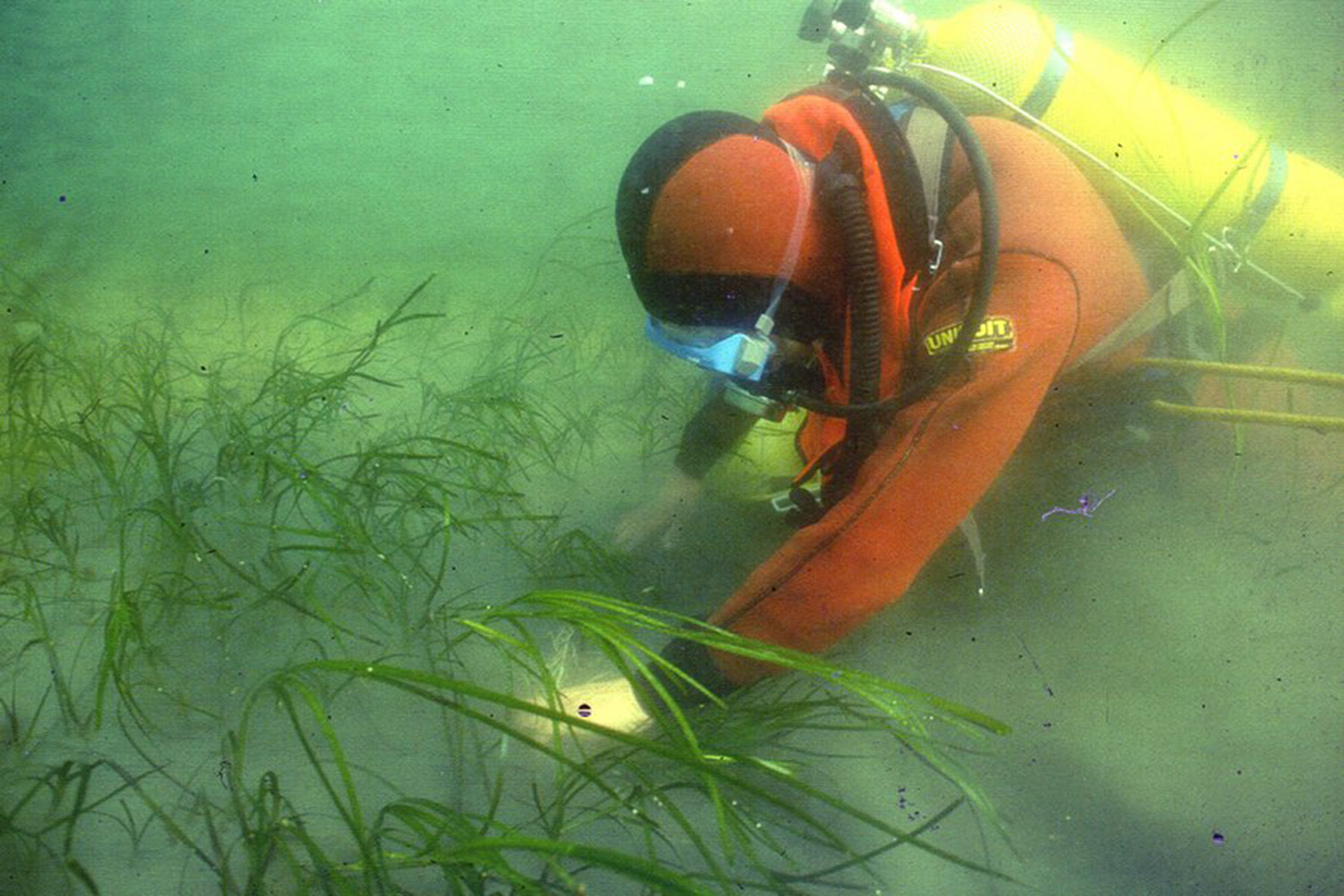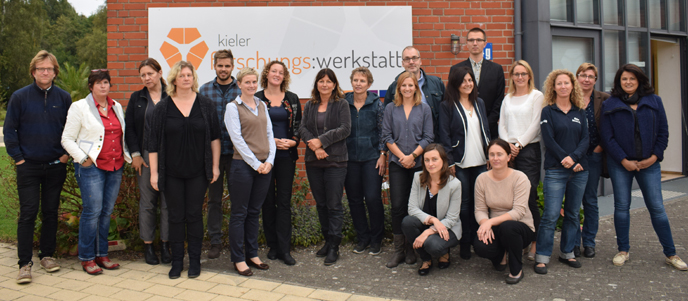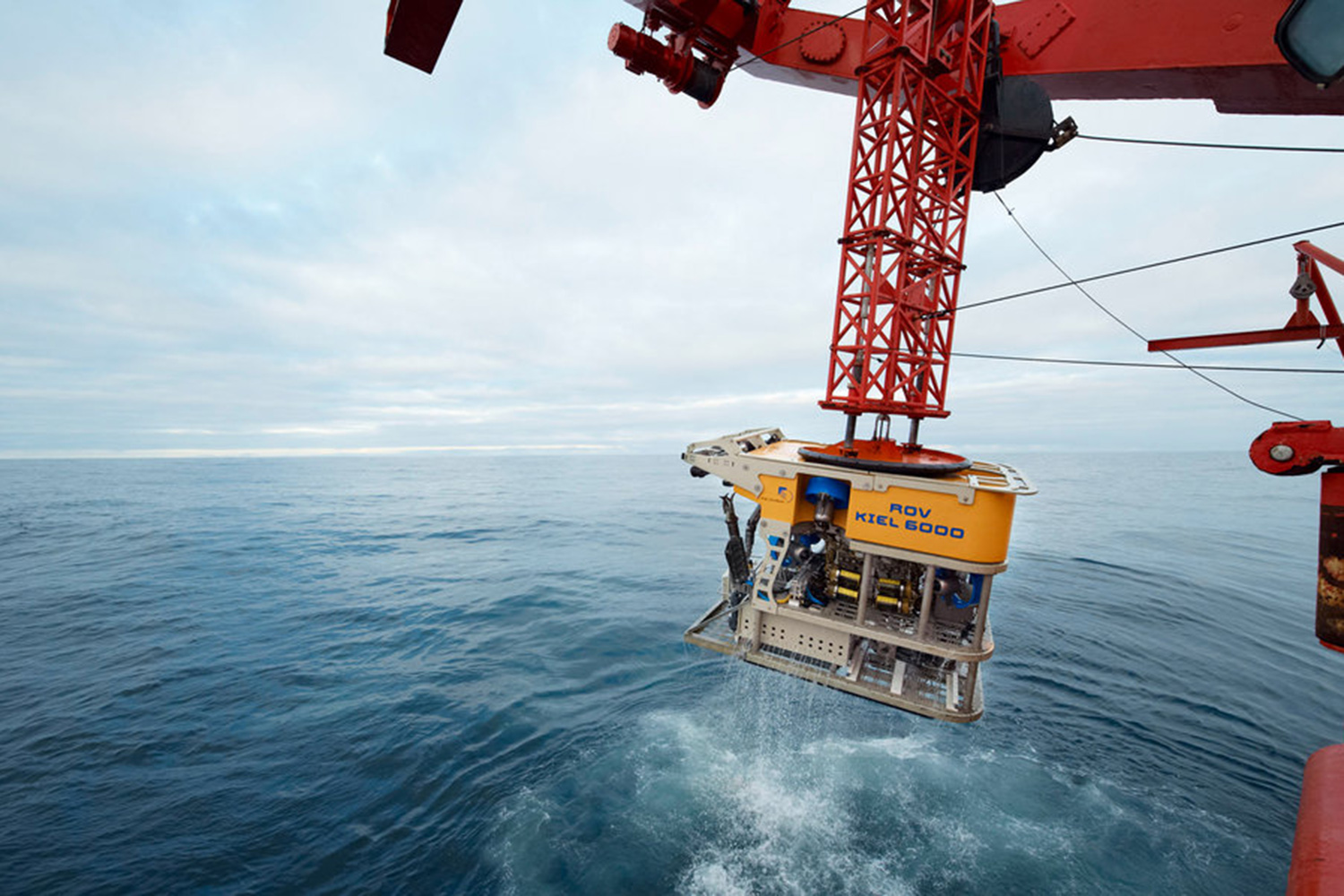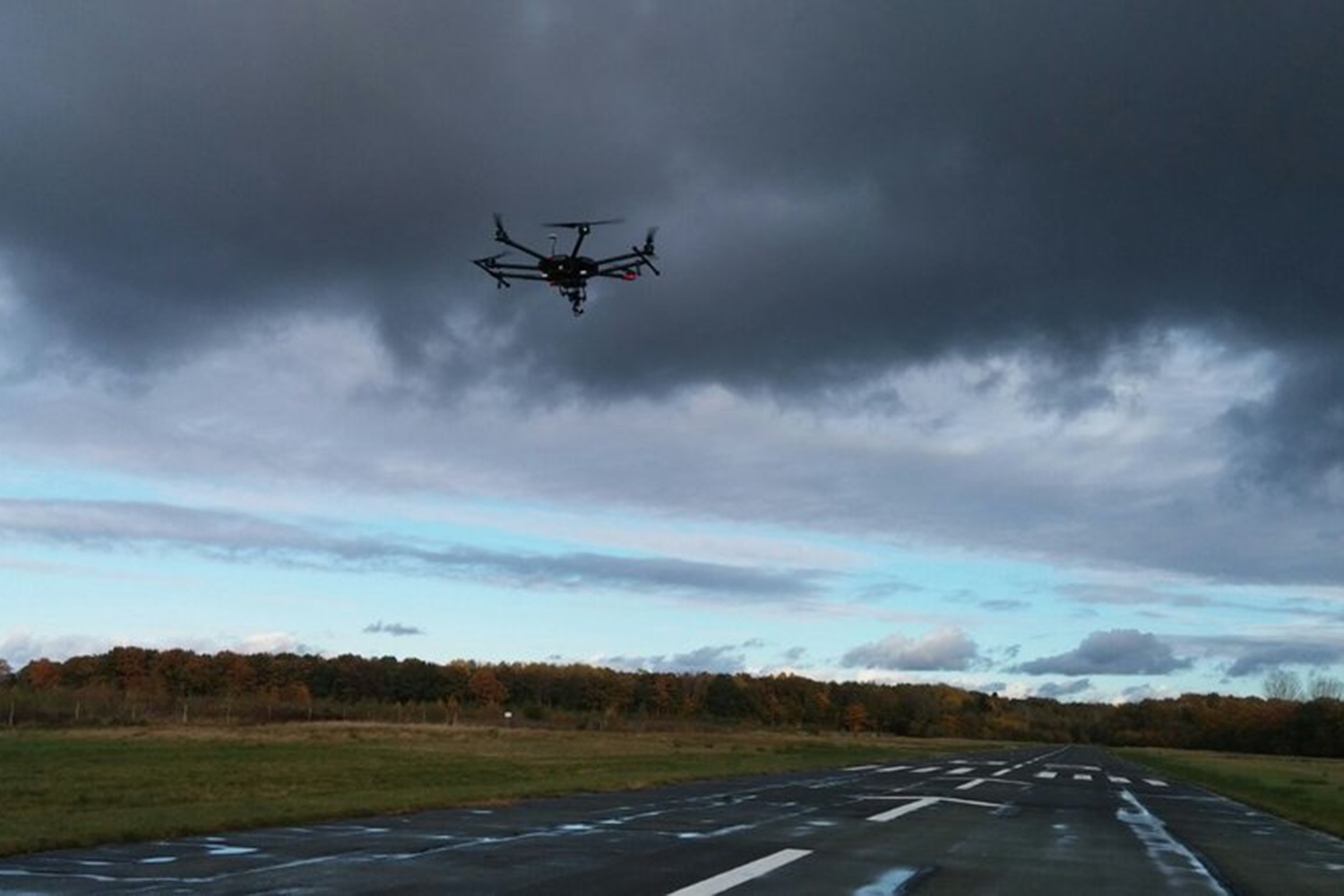Those who go bathing at the beach in the summer often perceive seagrass as disturbing. Yet it has enormous ecological and economical importance which is still generally underestimated. Seagrass beds offer breeding grounds for fish, hiding places for young fish and habitats for mussels, snails and crabs. A European-American consortium has deciphered the genetic blueprint of the great seagrass (Zostera marina) in an eight year project. “With the genome sequencing, we hoped to gain insight into the unique evolution of seagrasses,” says Prof. Thorsten Reusch from GEOMAR, one of the three coordinators and co-authors of the study.
Moreover, this seagrass is also interesting to science because it used to be a land plant which was evolutionarily capable of readapting to the sea. The ancestors of today’s Zostera marina are monocotyledonous plants, similar to wheat or ryegrass. The team discovered that in the course of the evolutionary development, numerous adaptations to life on land were lost, as these were not needed anymore. These include the formation of supporting tissue or special mechanisms to protect from over-evaporation.
Simultaneously, new genes arose which coincide with the return to the sea habitat. Thus the scientists were able to identify gene families that allow pollination under water and that help the plant cope with high salinity, low light intensity and a new parasite composition. Further, comparative genome analyses showed that the spread of the seagrasses occurred at the end of the Cretaceous period approx. 67 million years ago. At that time a meteorite impact probably caused the death of around 70% of all animals and plants.
“This study shows the enormous potential of comparative genome research and simultaneously demonstrates that in biological sciences, fundamental insight can only be gained through large, international teams,” says Professor Reusch. Seagrass has an immense importance for the marine ecology. “Without seagrass the sea floor is only a two-dimensional sand bed. With seagrass, however, we are dealing with a richly structured three-dimensional habitat,” emphasizes the Kiel biologist. In the past years, seagrass beds have decreased greatly, especially due to over-fertilization and direct destruction. General climate change is also threatening the plants. Heat tolerant populations from southern regions could be “genetic saviors” for northern populations, believes Reusch. The now published genome can offer an important basis to choose the most suitable genotype.
Biotechnologists are also interested in the genome sequencing, as seagrasses survive in salinities which would be deadly for crop plants. “Thus the genome is a valuable resource for biotechnologists to study the salinization of crop plants,” explains Reusch.
Original paper:
Olsen, J. L., P. Rouzé, B. Verhelst, Y.-C. Lin, T. Bayer, J. Collen, E. Dattolo, E. De Paoli, S. Dittami, F. Maumus, G. Michel, A. Kersting, C. Lauritano, R. Lohaus, M. Töpel, T. Tonon, K. Vanneste, M. Amirebrahimi, J. Brakel, C. Boström, M. Chovatia, J. Grimwood, J. W. Jenkins, A. Jüterbock, A. Mraz, W. T. Stam, H. Tice, E. Bornberg-Bauer, P. J. Green, G. A. Pearson, G. Procaccini, C. M. Duarte, J. Schmutz, T. B. H. Reusch, Y. Van de Peer (2016): The genome of the seagrass Zostera marina reveals angiosperm adaptation to the sea. Nature, http://dx.doi.org/10.1038/nature16548
Links:
www.geomar.de GEOMAR Helmholtz Centre for Ocean Research Kiel
www.futureocean.org Cluster of Excellence “The Future Ocean”
Foto material:
At www.geomar.de/n4227 available for download after the retention period.
Contact:
Jan Steffen (GEOMAR, Communication & Media),
Tel.: (+49) 431 600-2811
presse@geomar.de
…



